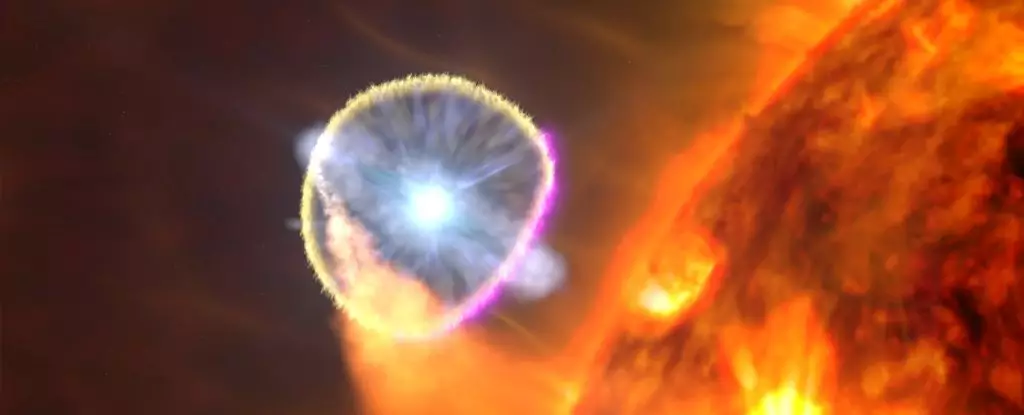In the vast expanse of the universe, an imminent event is set to captivate astronomers and stargazers alike. Deep within the Corona Borealis constellation, a star known as T Coronae Borealis is slowly building up to an explosion that will illuminate the night sky, temporarily transforming it into one of the brightest objects visible to the naked eye. This celestial phenomenon, known as a classical nova, is not only a stunning sight but also an invaluable opportunity for scientists to gather data.
The anticipation surrounding the explosion of T Coronae Borealis stems from its unique nature. This star has a history of erupting once every 80 years for over eight centuries, making it an exceedingly rare occurrence. Astronomers are eager for this event, not only due to its visual spectacle but also because of the technological advancements that now allow for more detailed observation compared to its last explosion in February 1946.
Classical novae, such as the one expected from T Coronae Borealis, differ from the catastrophic supernovae events that result in the obliteration of stars. Instead, these smaller explosions leave the star relatively intact. In the case of T CrB, its recurrent outbursts are attributed to its binary star system composition, comprising a white dwarf and a red giant companion.
White dwarfs, compact stellar remnants with immense gravitational pull, play a crucial role in the recurrent nova phenomenon. These dense objects, roughly the size of Earth to the Moon, possess a mass equivalent to 1.4 Suns. When paired with a binary companion, such as a red giant, white dwarfs can accumulate hydrogen material that eventually ignites in a thermonuclear explosion, expelling excess hydrogen into space in a dramatic display.
Recent observations have indicated that T Coronae Borealis is exhibiting behavior similar to previous eruptions, suggesting that a new explosion may be on the horizon, possibly before September 2024. Astronomers are closely monitoring this binary system as it enters a phase of increased brightness, signaling the impending nova event. The celestial show is expected to unfold in the vicinity of constellations like Lyra, Hercules, Boötes, and the radiant Corona Borealis.
As T Coronae Borealis prepares for its explosive display, scientists are not the only ones eagerly awaiting the event. Citizen scientists are encouraged to participate in data collection by observing and documenting the nova’s progression. With advances in telescope technology, researchers plan to capture the event across various wavelengths, from radio to X- and gamma radiation, providing a comprehensive understanding of the recurrent nova’s unpredictable nature.
The impending explosion of T Coronae Borealis presents a compelling opportunity for astronomers and enthusiasts alike to witness a celestial spectacle and contribute to scientific research. By studying the intricate mechanisms of classical novae, we can unravel the mysteries of these cosmic events and expand our knowledge of the universe.


Leave a Reply